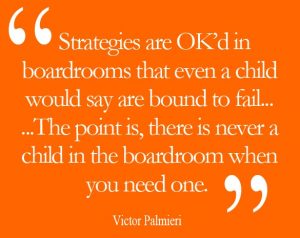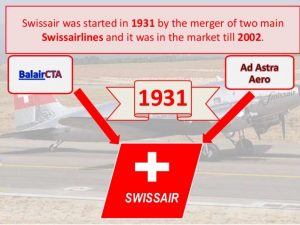Organizations around the globe develop strategic plans. They carefully create a vision of their future and the strategies needed to get there. But many fail to realize their vision and fail to deliver the expected strategic results. There is an old adage that ‘if you fail to plan you plan to fail’. This certainly holds true in the business world, in daily business endeavors, and even in our personal lives. When organizations and people have a plan simply for plan’s sake, things go wrong from the beginning. Organizations fail when they spend money, resources, manpower without direction. Another common mistake organizations do is they plan a strategy without understanding the environment or focusing on results. Managers must pay attention to changes in the business environment, set meaningful priorities, and understand the need to pursue results. Also when managers have partial commitment, plans fail miserably.
Weak communication spoils the strategic implementation
Poor communications takes too many forms; misunderstanding, confusion, slip-ups and mistakes. Apparently, people at top like to develop strategic plans, and then hide them from subordinates and peer groups by giving half information or a gist of it. It’s so funny, but this is a fact. People do this when there is no clarity; they fail to communicate the vision and strategic objectives to stakeholders. When new initiatives or objectives are outlined but not communicated throughout the organization, they fail at different level in different forms. Poor communication among team members is responsible for impediment in implementation. Expectations fail when opinions are not shared openly, thoroughly, and effectively. Also communication with the customers requires clarity; it is most important.
How Chevrolet Nova lost it in South America?
Have you heard the story about how General Motors made a simple but disastrous mistake when they tried to introduce the Nova in Latin America? They thought they could use the same brand name they used in the United States. They couldn’t figure out why no one wanted it until they learned it translated in Spanish to ‘No-go.’ When you are in Rome speak Roman.
Communication must consist of strategic objectives
Every action supporting the strategic objectives needs to be included in an overall communication plan so that the strategy is strengthened while an overall communication plan runs parallel. The communication gaps suck the originality of a strategy. Organizations become introverted in their communication strategies, whether the group is a large company or a small team. Communication is much more than words and flowcharts, it is also delivered through demonstration. When the management team does not follow the strategy themselves, they cannot expect the subordinates to follow it. Actions speak louder than words.
Founded in 1931, Swissair exemplified international transportation until the late 1990s, when the airline’s board decided to follow an aggressive borrowing and acquisition policy called the Hunter strategy. Then, the terrorist attacks of September 11, 2001 created a void in the company’s plans Swissair found itself cramped with debt. Swissair couldn’t handle the financial hit. Mismanagement and bad ideas created large sums of cash to purchase fuel at foreign airports which left the airline gasping for oxygen. In 2002, Switzerland was embarrassed to lose its national icon.
Lack of commitment
Business owners, CEOs, Directors and Executives must be fully committed and fully understand how a strategic plan can improve their enterprise. Without this knowledge, it’s tough to stay committed to the process. Each strategic implementation must have the right people involved. Those charged with executing the plan should be involved from the onset. Those involved in creating the plan will be committed to seeing it through execution. Writing the plan and putting it in the file is a bad idea. This is as bad as not writing a plan at all. If a plan is to be an effective management tool, it must be used and reviewed continually. Unwillingness or inability to change mars a well-defined strategy. The organization and its strategic plan need to be agile and able to adapt as market conditions change.
Polaroid was one of America’s early high-tech success stories. Founded in 1937 by scientist Edwin Land, the company built its initial business during the interwar period, prospered as a defense contractor during World War II, and then found new success as an innovator in the post-war boom years. The executives at Polaroid were snapping and shaking their pictures into oblivion. So loved was the brand that countless people took daily shots of and created art, diaries and literature using these magical snapshots taped to their walls or to the street. Polaroid failed to adapt to changing technology trends. It didn’t anticipate digital revolution in photography and it never got ready for change. To top it, poor marketing management and their inability to distance themselves from instant camera roots caused them a big failure. The leader of an amazing niche technology till 1980, went bankrupt in 2005. The name may emerge again, but the brand and the impact will remain retro.
Wrong people to implement strategy
When wrong people occupy the leadership positions however good a plan is on paper, it gets diluted. Gathering marketplace reality, facts, and assumptions requires maturity. And, when job profiles are not in place, when they are not properly drawn and when people are not held accountable for the results plan perish automatically. Unrealistic goals or lack of focus and resources do support the strategy. Strategic plans must be focused and include a manageable number of goals, objectives, and programs. Fewer and focused is better than numerous and vague. Each strategy work on time frame, and each strategy requires definite goals and objectives.
people are not held accountable for the results plan perish automatically. Unrealistic goals or lack of focus and resources do support the strategy. Strategic plans must be focused and include a manageable number of goals, objectives, and programs. Fewer and focused is better than numerous and vague. Each strategy work on time frame, and each strategy requires definite goals and objectives.
Enron Lesson
Enron was a leader in energy sector. It started to dabble in e-commerce and exotic investment areas, such as weather futures. In 2001, Enron which was once valued at $90 billion and the 7th largest company in the United States, went bankrupt. It took jobs, investor savings, retiree futures and even some lives with it. In following years, it emerged that they shredded documents, started partnerships with their own shell companies, and engaged in massive inside trading. Enron is now synonymous with the business outcomes of galloping greed. Wrong people lack ethics and loss of ethical values only harm organizations.
Loss of momentum: Having the right balance is crucial to making sure that people stay focused on processes and objectives made for strategies, it helps business to grow. There are many distractions which need immediate attention. Those distractions split the focus and slow the momentum. Successful managers and entrepreneurs are not perfect people, but even when they lose focus, they know how to gather momentum. They are aware of realities and weaknesses of the business. They consistently audit their time and their plan to make sure they maintain, or regain, balance. Inconsistency is part of parcel of business, but gaining back the momentum is art of managers.
Firestone’s long-standing success gave the company a strong, unified sense of its strategies and values, its relationships with customers and employees, and its operating and investment processes. The company had, in short, a clear formula for success, which had served it well since the turn of the century. Then, almost overnight, everything changed. A French company, Michelin, introduced the radial tire to the U.S. market. Based on a breakthrough in design, radials were safer, longer-lasting, and more economical than traditional bias tires. They had already come to dominate European markets, and when Ford declared in 1972 that all its new cars would have radials, it was clear that they would dominate the U.S. market, too.
Firestone Tire & Rubber Company through its large operations in Europe, had witnessed firsthand the European markets’ quick embrace of radial tires during the 1960s. And it had developed forecasts that clearly indicated that radials would be rapidly accepted by U.S. automakers and consumers as well. Firestone saw radials coming, and it swiftly took action. It invested nearly $400 million more than $1 billion in today’s dollars in radial production, building a new plant dedicated to radial tires and converting several existing factories. Although Firestone’s response was quick, it was far from effective. Even as it invested in the new product, it clung to its old ways of working. Rather than redesign its production processes, it just tinkered with them even though the manufacture of radial tires required much higher quality standards. In addition, the company delayed closing many of its factories that produced bias tires, despite clear indications of their impending obsolescence. Active inertia had taken hold. Lack of momentum costs organizations heavy losses.
Lack of alignment
Alignment means that everyone in the organization clearly understand how their own set of goals and tasks are contributing to the strategic plan. Measuring alignment can be difficult when organizations use manual strategy and goal tools such as Excel or even pen and paper. Organizations need to formulate and calculate the level of alignment by measuring the amount of work-effort people need to put in against each goal set by it. One way to help drive alignment, is to create a clear strategic framework and make people categorize their activities into that framework.
KFC Coupon Riots
KFC worked closely with Oprah Winfrey to promote a new line of chicken. When Oprah offered free coupons on her website, KFC didn’t properly estimate the overwhelming response the ‘Oprah Effect’ would create. Customers were understandably angry when they didn’t get their free chicken, and KFC had to reimburse them with rain checks. This laid KFC lose its big chunk of market share.

















































